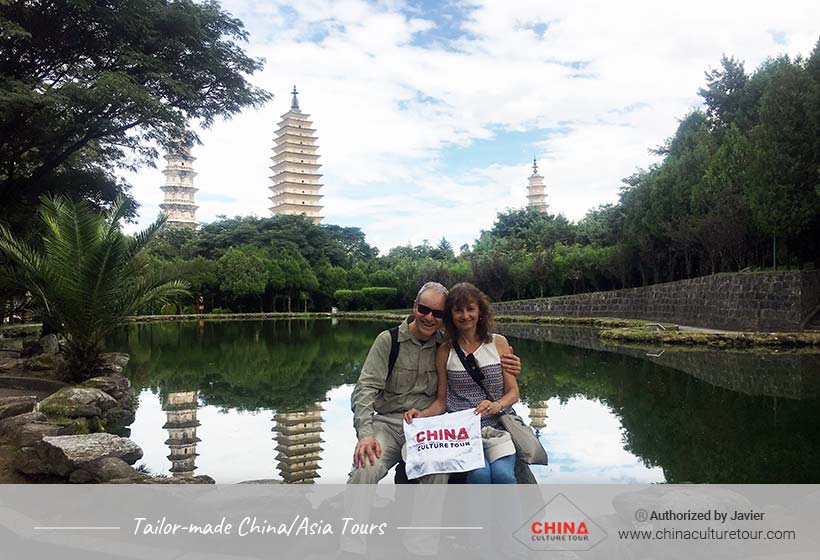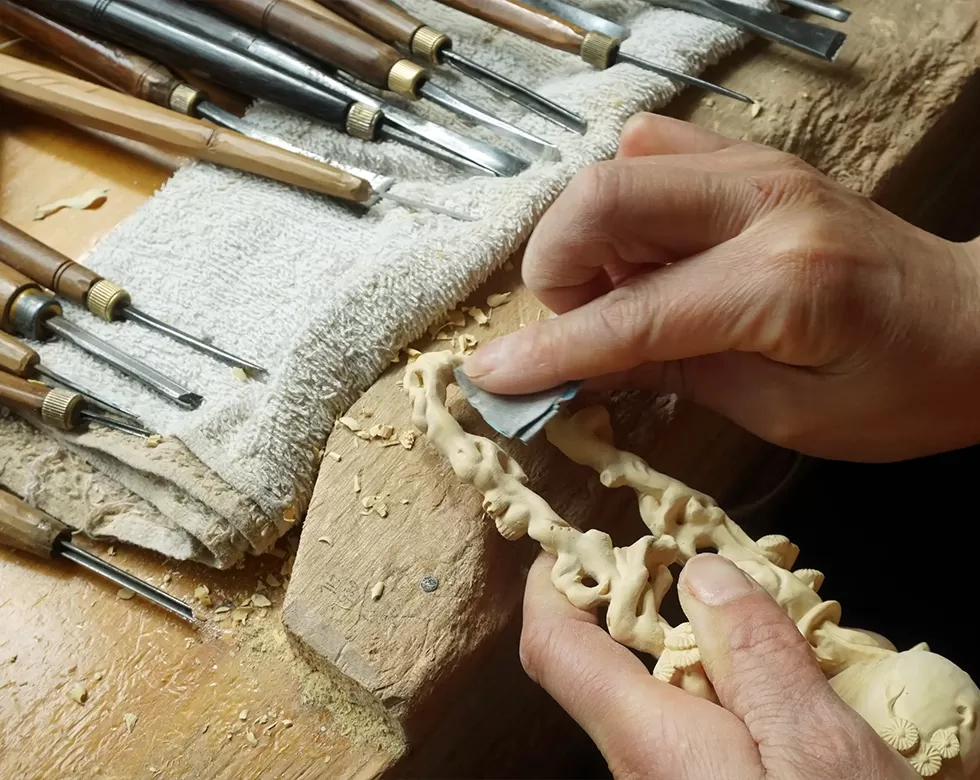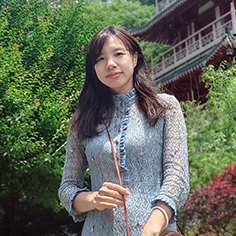Cultural Activities, What is worth experiencing in Dali
Dali is not only known for its stunning landscapes but also for its rich Bai ethnic culture. The Bai people, who have lived in this region for thousands of years, are famous for their traditional arts. There are many hands-on cultural activities in Dali, such as Bai Tie-dye, create your own unique Tie-dye artwork, join a flower cake making class, and savor the delicious local desserts you’ve made yourself. Meeting artisan of Nuodeng salt, visit the Nuodeng Salt Production. Wood carving class, visit local craft man and learn about the art of wood carving. Through these experiences, get away from all worries, simply relax and enjoy the fun of these activities.
Learing Tie-dyeing in Zhoucheng Village
- Type: Cultural Immersion/ Art & Architecture
- Tour Length : 1.5-2 hours
- Location: Zhoucheng Village,Xizhou Town,Dali
Learning tie-dyeing in Zhoucheng village offers a unique cultural experience. Tie-dyeing is a testament to the ancient wisdom of the Bai ethnic and one of Dali's most iconic intangible cultural heritages. This traditional craft typically uses natural plant-based dyes, such as indigo, safflower, and gardenia. The art of tie-dyeing involves two key processes: "tying" and "dyeing," which imbue each piece with its unique charm. The most common patterns feature white flowers on a blue background, though reverse designs of blue flowers on a white background are also possible.
You'll start by choosing a piece of fabric, such as cotton and preparing it with a thorough wash. Local Bai people will teach you how to sew flowers, tie them with thread, and then dye them using natural pigments from indigo plaints or extracted from Radix Isatidis Root, also known as Ban Lan Gen (bǎn lán gēn,板蓝根) which is a Chinese medical herb used to dissipate excess heat from the body and diminish inflammation and detumescence. The dyed fabric initially appears yellow-green, but as it is left to sit in the air for a while, a miracle happens—the color gradually transforms into a vibrant blue. This is amazing! After the fabric is dried and the threads are untied, the areas covered by the threads remain white, creating beautiful patterns. Once the dyeing process is complete, the fabric is rinsed and dried, revealing the distinctive and colourful patterns that showcase the traditional art of Bai ethnic tie-dyeing.
It’s a fascinating experience where you can create your own unique designs, whether on clothes, handkerchiefs, skirts, or other items, each becoming a one-of-a-kind piece of art.
Making Flower cake
- Type: Cultural Immersion/ Food
- Tour Length : 1.5 hours
- Location: Dali
Flower cake is one of the favorite and unique desserts that showcases the floral flavors of fresh flowers in Yunnan. With 300 years of history, it is a puff pastry stuffed with different edible flower jams and pastes. Just a single bite, your mouth is filled with aroma of fresh flower. You will learn how to bake this delightful dessert in a 1.5-hour cooking class. From late June to October, besides baking flower cake, you will also get the chance to pick fresh flowers to make this dessert. typically roses. The process begins by selecting fresh petals, washing them thoroughly, and mixing them with sugar to create a fragrant filling. This filling is then wrapped in a soft dough, shaped, and baked until golden and flaky. The result is a sweet, aromatic pastry with a hint of natural floral essence, making it a beloved treat for both locals and visitors.
Meeting Artisan of Nuodeng salt
- Type: Cultural Immersion/ Art & Architecture
- Tour Length : 1.5-2 hours
- Location: Nuodeng village, Yunlong County, Dali
Move westwards from Dali and visit Nuodeng Ancient Village on a lush mountain side. Nuodeng village is well known for its natural salt and ham. Filled with mudbrick residences from Ming and Qing dynasty, in this village, there is an ancient salt well that produces saline water. This salt well has been existed for more than 2,000 years dated back to the Han dynasty. Benefited from its potassium-rich natural salt, Nuodeng enjoyed centuries of prosperity. Settled along the ancient Southern Silk Road, Nuodeng salt was transported using horses, mules and donkeys all the way to Tibet and India. Even till today many villagers continue to extract salt from saline water by boiling it over large wood-fired cauldrons for own use and as a source of income. Salt is then compressed into small blocks. We will visit a family that still keep this skill and see how salt is made the traditional way.
The village is also famous for its salted ham and Nuodeng salt is one important ingredient. Stroll around the ancient village and pay visit to some local families, you can spot pickled hams hanging under the celling or roofs in their houses. People will spread layers and layers of salt on the ham repeatedly. Layer of stove ash with mixture of Nuodeng salt and mud are used to cover the ham. Put salt pickled hams in a container for weeks before suspending them in a cool and ventilated place with a rope for at least three years. When the weather become warm and wet, salted hams begin to mildew and that layer of mold pushes hams into a deep fermentation process. Hams over 3 years old can be eaten rare. These mature hams with green molds taste the best. The outer layer will be removed when serving. Rich flavor, tender meat and strong aroma, you should try it when in Nuodeng.
Yunnan cheese-making class
- Type: Cultural Immersion/ Food
- Tour Length : 2 hours
- Location: Shaxi Ancient Town
Traditional Chinese cuisine hardly incorporated dairy products into any dishes, but in Yunnan, many of the popular food are made from dairy products. A few ethnic minority groups here have been making cheese for centuries. Yunnan cheese, or what the locals call it “Ru Bing” and “Ru Shan” are famous local food. In Shaxi, where most of the people are Bai ethnic minority, you will join in a cooking class and learn how to make either Ru Bing or Ru Shan.
Ru Bing, similar to halloumi cheese, is made from goat milk. The process of making Ru Bing is similar to that of making tofu. It can be eaten in many different ways, roasted, baked, fried or steam. Some are cut into cubes and stir-fried in a wok with other ingredients – something you would only find in China. Most common way of eating Ru Bing is to cut it into slices and fried to golden. You can eat it plainly or dipped it in sweet or chili sauce. Tofu-like taste with a mild milk flavor.
Ru Shan, literately means “milk fan” due to its shape, has a toasty but sweet and sour taste. The process of making Ru Shan, in short, is to stretch milk curds into sheets and wrap around sticks before left to dry. It is usually deep fried, giving it a light and crispy texture, and can be severed with sweet cream. Sometimes, it can be rolled around a stick, grilled and covered in rose jam. Chewy and flavorful like caramelized cheese stick. Also, find it in three-course tea ceremony of the Bai people.
Wood carving class in Shaxi Ancient Town
- Type: Cultural Immersion/ Art & Architecture
- Tour Length : 4 hours
- Location: Shaxi Ancient Town
Jianchuan County is well known for its exquisite wood carving. This craftsmanship in Jianchuan was started in the Song dynasty. Most of the population here are Bai ethnic minority and you can spot stone and wood carvings almost on every ancient Bai-style housing. Located on the ancient Tea and Horse Road, Shaxi Ancient Town in Jianchuan County is a well-preserved caravan oasis town. Wooden housings and winding streets, we will visit a local craftsman here and learn about the art of wood carving. This 4-hour lesson is of manageable level. Learn how to use different carving tools from your teacher and design a palm size wood carving of your own. You can bring your art piece home as a souvenir. There is a market in town every Friday, where you can see people trading goods and livestock
Making a Wa Mao
- Type: Cultural Immersion/ Art & Architecture
- Tour Length : 1-2days
- Location: Xizhou Ancient Town, Dali
The wamao is a unique decoration in the traditional Bai-style architecture, with a history of over 1,000 years. It is typically placed on the roof ridge, eaves, or rooftops above the main entrance, serving as a common talisman to ward off evil in Bai architecture in Dali and Lijiang. Today, wamao are crafted into various handicrafts such as small pendants and ornaments for sale.
In Xizhou Ancient Town, creating a wamao is a fascinating and hands-on experience that immerses you in the traditional Bai craftsmanship. you can experience making a wamao yourself—The process begins with shaping the clay into the iconic wamao form, carefully molding its features. Once the clay model is complete, it is left to air-dry before being glazed with vibrant colors. The final step is firing the piece in a kiln to bring out its glossy finish and durability. The result is a unique and meaningful artifact that reflects the cultural heritage of the Bai people. It's a rewarding activity for anyone interested in traditional arts and crafts. The entire process usually takes one or two days, but if you are short on time, the finished product can be mailed to you.
Customize Your Unique Yunnan Tour

If you are interested in one of the Yunnan itineraries mentioned above, please contact us, and we will be happy to customize it and provide a quote tailored to your preferences.
Alternatively, if you would like to customize your Yunnan Tour, please visit our Yunnan Tour Customized Center. We assure you that you will receive a reply within 24 working hours.
Informative Articles for Your Dali Trip
 Dali Three Pagoda
Dali Three Pagoda- Travel Guide: attractions, seasons, hotels, food, itineraries, etc.
- Top destinations: places to visit in Dali
- Travel itineraries: best itineraries for your reference
- Weather: the best time and seasons to visit Dali
- Top attractions:well-selected top attractions in Dali
- Dali: rich and unique culture
- Cultural immersions: hands-on activities to spotlight your trip
- Unique perspective: top different things to do
- Local food: what to eat while traveling in Dali
- Luxury hotels: where to stay in Dali
- Yunnan Tours: tailor-made Yunnan Tours for your reference
GREAT FAMILY CHINA TOUR
JULY 2024 We wanted to thank Grace at China Culture tour for organizing a great tour of China. We enjoyed our Beijing - Xian-Chengdu -Guilin -Yangshuo - Shanghai trip. Our local guides Bruce in Beijing, Susan in Xian, Jane in Chengdu, Mike in Guilin and Mary in Shanghai took care of us…read more details »
Teng Han L from SINGAPORE
Ready to Create a Unique Dream Travel?


